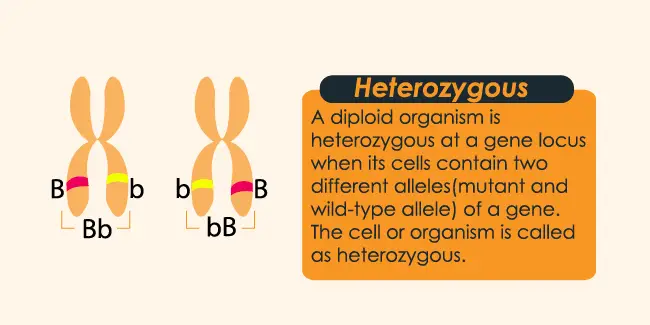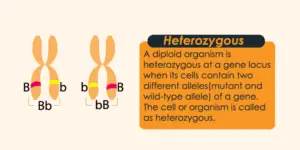
Heterozygous Definition In Biology, Let’s Have A closer look
Heterozygous also known as heterozygotes, refer to an individual who has two different alleles of the same gene in his or her genetic makeup. It is is one that has two different forms of the same gene, one corresponding to the mother and the other inherited from the father.

The term heterozygous describes the genotype of a diploid organism at a specific locus in its DNA. A genotype in which two different allelic genes are represented: dominant and recessive. The phenotype of a heterozygous organism, as a rule, determine by dominant alleles.
Heterozygous Characteristics
When the 2 genes of the same homologous chromosome locus are different, an organism is heterozygous. Since the organism, being diploid has in each of the homologous chromosomes a different allele. It has two different forms of a particular gene; each inherited from each of the parents.
Such as one gene that gives a plant a high size and the other gives a short size.
Let,s talk more about it.
Heterozygous example and diseases
The gene for the seed shape of the pea plant has two forms: a shape or allele for the round or smooth seed; and another form or allele9 for rough seed. A heterozygous plant has the following alleles for the seed shape: (Rr). The asserting allele is said to be dominant, the other as recessive.
A good example to understand what it means is that people who have type AB blood are heterozygous.
How the dominant and recessive genes interrelate, it might involve:
Complete dominance
Complete dominance is when the dominant allele has the same phenotypic effect in both heterozygous and homozygous forms. When crossing homozygous plants with smooth peas (AA) with homozygous plants with wrinkled peas (aa), the peas are smooth in heterozygous offspring (Aa).
Incomplete dominance
Incomplete dominance is when the appearance of the first generation is intermediate between the phenotypes of the two-parent varieties. In this dominance, the heterozygote phenotype is different from the two homozygote varieties. Therefore the genotypic and phenotypic ratio is 1: 2:1.
For example, when crossing homozygous red carnations (RR) with homozygous white (rr) in heterozygous offspring (Rr), flower corollas are pink.
Codominance
It occurs when different alleles represent individually but different parts of an individual. Codominance is different from incomplete dominance. In this, both traits represent equally. For example, codominance is the inheritance of blood group characteristics A and B in the AB0 system.
Diseases
Dominant diseases are as follows;
- Marfan’s syndrome
- Familial hypercholesterolemia
- Huntington’s disease
Let compare with homozygous
Homozygous and heterozygous definition biology
A homozygous individual that contains only one allele of the pair is a Homozygote. It has identical genes at the loci of the homologous chromosomes. On the other hand, a heterozygous individual is one that contains two alternative forms of a gene pair is Heterozygote. One type of phenotype express in it.
Also read: